In 2013, Mark Walker, a retired medical consultant from Wales, inherited from his mother a brass sculpture. Walker had been hoping that it might be left to him; it was part of a pair with another of the same origin that his mother had given him some years previously, and he had been aware of these two objects, a bird and a bell, for more than half a century, since he first encountered them at the home of his grandmother in Kensington. They had been acquired by his grandfather, Herbert Walker, an officer in the British Army, from the kingdom of Benin in 1897. Walker remembers being ‘terribly impressed’, as a boy of 12, by the ‘rather horrifying photographs’ he found in his grandfather’s diary of those years – ‘of emaciated corpses and other such findings’. In the years since, he has become something of a family history buff, and has long thought of the sculptures as having ‘tremendous significance as family heirlooms’. Shortly after the death of his mother, however, he began to wonder whether his children or grandchildren would continue to share this feeling. ‘It was at that point that it dawned on me that the objects might be of much greater significance to the people from which they came,’ he says.
Walker got in touch with an organisation he found on the internet called the Richard Lander Society, named after the British explorer who first traced the course of the Niger to the Atlantic Ocean, which had put out a call on its website supporting the repatriation of the Benin Bronzes. The famous plaques, busts and other sculptures, some dating back as far as the 13th century, that once adorned the royal palace, and record the history of the kingdom (now part of southern Nigeria) and its rulers, were looted by the British Army during the punitive expedition of 1897, when the Oba of Benin was deposed and forced into exile. The Richard Lander Society put Walker in touch with the present royal family of Benin, and by June 2014 he was on his way to Nigeria, family heirlooms in tow.
The reception Walker was given in Benin City ‘almost overwhelmed’ him. ‘I was expecting to be politely received, perhaps with a few photographs and interviews. But I did not expect four large marquee arrangements in the palace grounds with the entire aristocracy of the royal family and its retinue […] They could not have given me any more of a state welcome than they did.’ He points out that the objects themselves are ‘relatively trivial’ – ‘there are several examples of the bell knocking around museums and in private collections and there are much better examples of the bird of prophecy’. The importance of the symbolic gesture, however, has not been forgotten in the six years since. The Nigerian artist and art historian Peju Layiwola, a descendent of the Benin royal family and a long-standing campaigner for the return of the Bronzes, tells me that she still sees Walker’s action as ‘one of the most honourable acts of restitution to date’, and ‘a strong example for public institutions’ to follow. After conducting some research on the website of the Horniman Museum in London, Walker has more recently identified two wooden ceremonial paddles in his possession as being from Benin; they are currently on show at the Pitt Rivers Museum in Oxford, ahead of their return to Benin City.
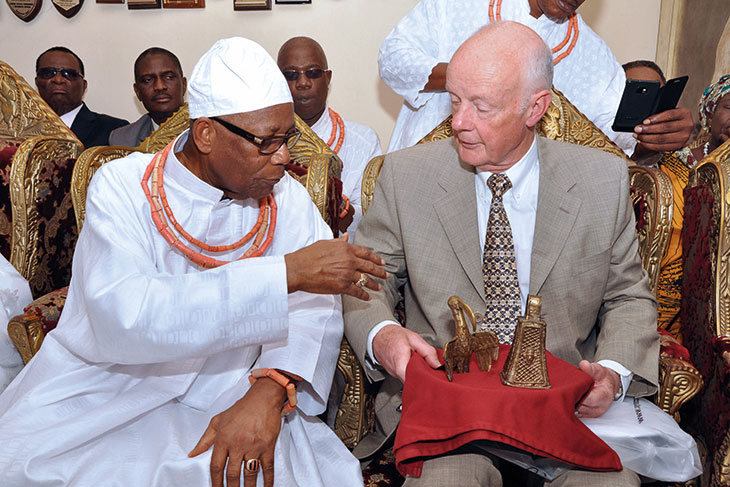
Prince Edun Akenzua and Mark Walker with two Benin bronzes returned at a ceremony in Benin City, Nigeria, on 20 June 2014. Photo: Kelvin Ikpea/AFP via Getty Images
In the report by Felwine Sarr and Bénédicte Savoy on the restitution of cultural artefacts taken from Africa during the colonial period, commissioned by the French president Emmanuel Macron and published in 2018, Walker is singled out for similar praise. His is among a small number of what Sarr and Savoy call ‘discreet and efficient attempts at taking restitution into one’s own hands with the “definitive” restitutions of African works of art, without the least expectation or support from public powers’. The praise is little more than an aside, for the report is concerned primarily with the restitution of objects from public institutions in France. Its headline-grabbing estimation that more than 90 per cent of Africa’s material cultural heritage is housed outside the continent is based on comparison of museum inventories; its central recommendation is for a protocol to oversee the return of objects from French museums.
There are many good reasons, both legal and logistical, that private collections have been left well out of the broader restitution debate. The true number of works taken from Africa currently in private hands in the West is, and is likely to remain, a mystery. Many hundreds of African sculptures appear each year in small auctions and street markets across Europe and America; with scant documentation, 19th- and early 20th-century pieces are often lumped in by untrained eyes with more recent works made for the tourist trade, and often sell for similarly low prices. It is impossible to know how many more like them might remain on mantelpieces or in attics. Many of these may have been long forgotten by the communities from which they came, and, without the publicity garnered by museum displays or marquee sales at the major auction houses, the odds on any one of these being requested by its community of origin are extremely low. Even if they were, the law throughout Europe protects both the right to private property and the rights of buyers who act in good faith. Short of an overhaul several orders of magnitude more radical than anything Sarr and Savoy have proposed, there is unlikely to be any legal onus on collectors of African art to consider returning artefacts removed during the colonial era in the foreseeable future.
Moreover, Macron’s attempts to begin putting what the Sarr-Savoy report does propose into practice have proved a sufficiently ambitious undertaking over the past 18 months. The changes to French cultural heritage laws that its recommendations require have met with fierce opposition. Promising to act ‘without delay’, Macron committed shortly after the publication of the report to the return of 26 artefacts from the collection of the Musée du Quai Branly in Paris to the Republic of Benin. A year of inaction followed, with Macron facing resistance from a number of government officials including his culture minister Franck Riester. In December last year, Felwine Sarr declared that ‘things are not moving as fast as we would have liked’. A commitment has since been made that these objects will reach Benin by 2021.
In January this year, however, a group of 27 works of art did make the journey from Europe to Benin. They were purchased at auction by a collective of art dealers led by the Parisian gallerist Robert Vallois, and donated to the nation as part of the collection of the Petit Musée de la Récade in Cotonou. Dedicated to the royal sceptres once used by the kings of Dahomey (as part of modern-day Benin was once known), the museum was established in 2015 by Vallois’s group, which also provided its collection, buying up a group of récades at auctions and from galleries over four years. Some of the sceptres, made for King Glele of Dahomey (1814–89), cost tens of thousands of euros; others, made for lesser dignitaries, were acquired for as little as €250 on eBay.
‘For us,’ Vallois tells me, ‘this is not restitution. It’s something we have done simply because we wanted to do it – a gift we make to Benin from the heart.’ Vallois sits on Macron’s restitution committee; he says that ‘there is still a lot of work to do’ with regards restitution from museums. In the meantime, the museum in Cotonou attracts some 500 visitors a month. There is a library, and a centre for contemporary arts, which has seen renowned Beninese artists such as Dominique Zinkpè commissioned to produce a work in response to the récades.
For Didier Claes, a Belgian-Congolese dealer of African art based in Brussels, ‘The most important thing is to provide the African public at large with better access to their cultural heritage and their patrimony.’ Claes became involved with the Petit Musée de la Récade this year, contributing to the purchase of 27 sceptres in January; he says that, though the Sarr-Savoy report ‘made a great deal of noise’, its aims are fundamentally ‘unachievable’ at the current time; while the number of museums in Africa is steadily growing, it remains the case that in many African countries there are few facilities that might adequately house these objects. ‘For some people,’ he says, ‘[restitution] is not really about the objects themselves. It’s more of a moral question – whatever the difficulties, they ought to go back to Africa as kind of moral compensation […] But as a dealer of African art and a lover of Africa, I was looking for something that was achievable.’ In itself, the museum is an instance of repatriation on a scale rather smaller than what has been demanded – yet Claes suggests that focused, voluntary initiatives such as this, if they accumulate, might constitute the first step in providing Africans with better access to their cultural heritage. Vallois adds that the scale of his collective, and its independence from any state body, is part of what makes it a ‘special action’. It is a voluntary gift, ‘from people to people’.
Joe Mulholland, a collector and gallerist in Glasgow, says that ‘you don’t have to be a nation state or a multi-billionaire to do something good in this field’. He began collecting works of art from Africa around ten years ago, intrigued by the small wooden sculptures he found coming up for sale at low prices in Glasgow auction houses. He threw himself into researching these objects, and put on a non-selling exhibition at his gallery in 2014. (By way of disclosure, this led to my own first interest in the arts of Africa; Mulholland hired me to continue this work, and I made the catalogues for his next two exhibitions of African art at the Hidden Lane Gallery, in 2016 and 2018.) On a trip to Bamako in 2017, Mulholland visited the Musée National du Mali, and was struck by the fact that, while works by Dogon or Bamana artists from the Middle Ages were well represented, the collection held almost nothing from the 19th and early 20th centuries. He presented the acting keeper of the museum with his catalogues, and told him to choose anything and everything he wanted. From around 400 objects, 115 have been selected for the museum’s permanent collection. Mulholland hopes that these objects will be in Bamako by next year, and has also offered the rest of his collection to Haiti. ‘If everyone who has an interest in this field was able to do some small thing,’ he says, ‘it would redress some of the balance.’
In the wake of the Sarr-Savoy report, and the focus it has put on the issue of restitution, the number of those who share Mulholland’s feeling is beginning to grow. Tim Maxwell, joint head of art law at Charles Russell Speechlys, has been interested in the question of voluntary restitution by individuals for some time but became more so after reading about Mark Walker’s case, which he says was ‘unprecedented’. Maxwell stresses that in many cases there may be no legal onus on people to return objects taken during the colonial era – but says that more people are beginning to see the moral argument for doing so; he is currently working on a number of such cases. For individuals wishing to repatriate objects, Maxwell says that there can be legal impediments in cases where ownership is joint, or if they are owned on behalf of a trust. Nonetheless, it is far easier to negotiate the return of objects when they are owned by an individual rather than a state.
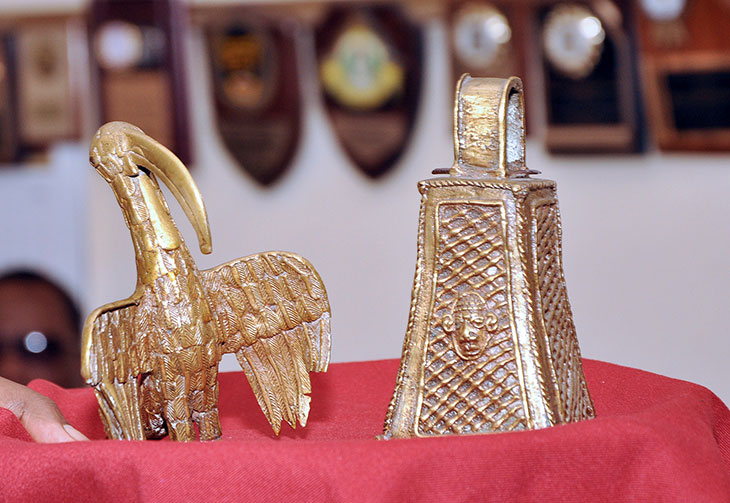
The two Benin bronzes returned by Mark Walker. Photo: Kelvin Ikpea/AFP via Getty Images
It remains a particular hope for Mark Walker that his actions might pave the way for others. What Sarr and Savoy refer to as his ‘discreet’ action was, in Nigeria, anything but; it was reported in the press all over the country. Walker points to the decision by Jesus College, Cambridge, to return a bronze cockerel – an okpa – to Benin; while not suggesting that this was directly inspired by his own actions, he notes that one of the students campaigning for the object’s return was Nigerian, and wonders whether this may have had some small effect. Moreover, Walker is keen to point out that it is not only Africans who stand to gain from such returns. As Walker found out on his trip to Benin City in 2014, the bird of prophecy – also called a ‘messenger of god’ – is a kind of idiophone, an instrument that can be struck on the nose to produce a sound; it was regarded as a divine indication of the Oba’s ability to alter history. ‘My family never even tried striking it on the nose,’ Walker tells me. ‘I learned quite a lot.’
From the July/August issue of Apollo. Preview and subscribe here.
Unlimited access from just $16 every 3 months
Subscribe to get unlimited and exclusive access to the top art stories, interviews and exhibition reviews.

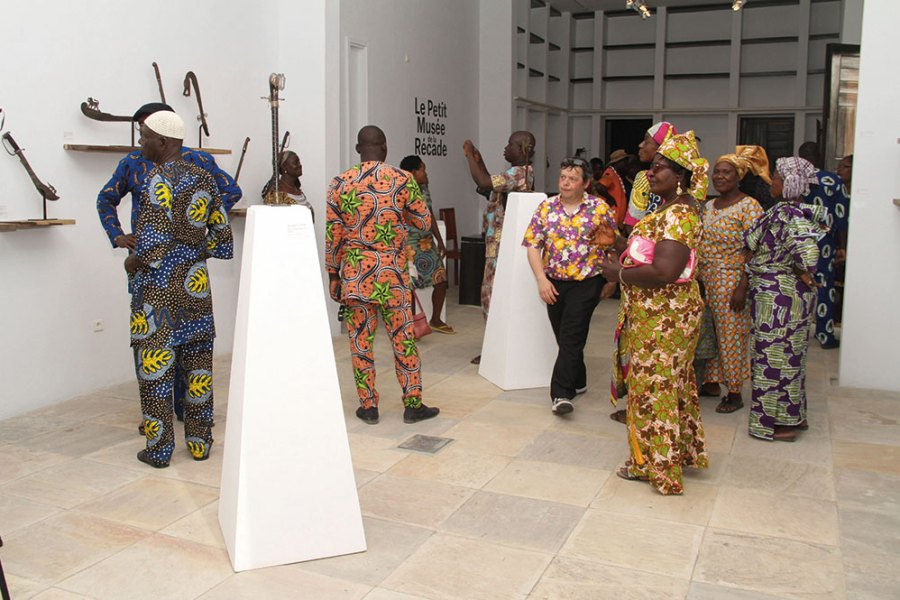
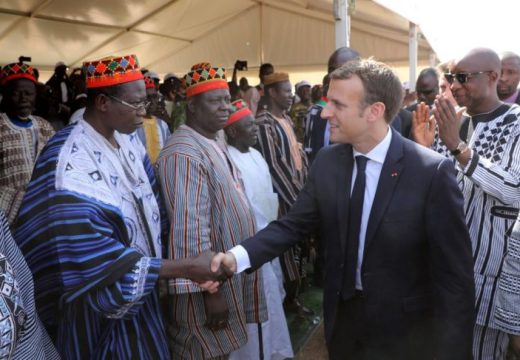
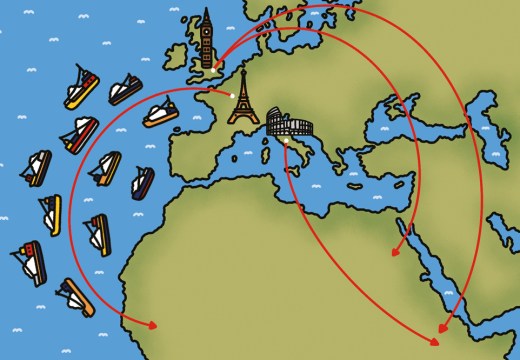
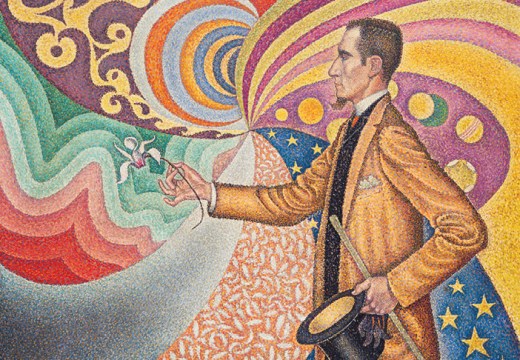









![Masterpiece [Re]discovery 2022. Photo: Ben Fisher Photography, courtesy of Masterpiece London](http://www.apollo-magazine.com/wp-content/uploads/2022/07/MPL2022_4263.jpg)
It’s time for the government of London to return to its rightful home